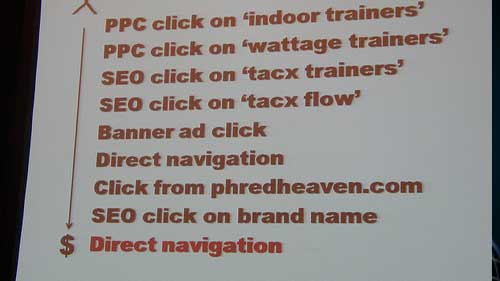Step-by-Step Guide to Using Pinterest for Affiliate Marketing
Wednesday, April 16th, 2025

Pinterest is one of the most exciting platforms to explore for anyone looking to spice up their affiliate marketing game. Whether you’re a busy mom on the go, a creative college student, or a seasoned business owner, this unique platform can help you discover new ways to turn your passion for sharing ideas into actual earnings. If you’ve ever saved a delicious recipe or pinned a dreamy living room makeover, imagine taking that same enthusiasm and using it to earn a commission on products you already love. It might sound a bit too good to be true, but with the right tactics, Pinterest can become your secret weapon for affiliate marketing success.
By the time you finish reading, you’ll know exactly how to pin with a purpose and start making affiliate income like a pro.
Why Pinterest Is Perfect for Affiliate Marketing
Pinterest might seem a bit different from other social platforms, but that’s exactly what makes it so valuable for affiliate marketers. Traditional social media marketing often focuses on immediate engagement—likes, comments, and shares. On Pinterest, people are mostly browsing content for inspiration or solutions. This “search and discover” mindset means they’re more open to clicking through to links, blog posts, and product pages. So if you have a compelling pin that solves a problem or sparks an idea, people are likely to follow through.
Key reasons Pinterest rocks for affiliate marketing:
- Longer Content Lifespan: Unlike other platforms where posts fade fast, pins on Pinterest can continue driving traffic for months or even years.
- Highly Visual Search Engine: Pinterest is essentially a visual search engine. People type in keywords (like “boho home decor” or “keto recipes”), discover pins that intrigue them, and then save or click for more info.
- Ready-to-Buy Audience: Folks on Pinterest are often planning purchases or looking for step-by-step tutorials. If your pins resonate, viewers are primed to buy.
What does this mean for you? It means your affiliate links have real potential to keep earning for the long haul. Whether you’re sharing fashion looks, home décor ideas, or gadgets for the fitness buff, there’s an audience on Pinterest waiting to see what you recommend.
Set Up an Affiliate-Friendly Pinterest Account
Before you jump into pinning anything and everything, make sure your Pinterest account is set up for success. There’s a big difference between a personal account that you use to pin random DIY crafts and an affiliate-friendly profile that generates income.
Here’s how to do it:
- Switch to a Business Account: This is super important because it gives you access to Pinterest Analytics, which lets you see how your pins are performing. Analytics also offer insights about your audience, giving you a better sense of which pins are worth focusing on.
- Claim Your Website: If you have a blog or a personal website, claim it on Pinterest. This will boost the credibility of your pins, help you track analytics more efficiently, and let other users see your website’s name on your pins.
- Optimize Your Profile: Use a friendly profile photo and a catchy bio that mentions what you love sharing, plus a hint at what people can expect if they follow you. Also, slip in some keywords that reflect your niche—think “budget-friendly fashion,” “healthy meal ideas,” or “cozy home décor tips.”
With these easy steps, your Pinterest account will be prepped to support your affiliate marketing efforts. Think of it like laying a strong foundation before building your dream home—you want everything in place so your content can thrive.
Identify Your Niche and Create Inspiring Boards
Finding your niche is one of the most crucial steps for Pinterest success. A niche is basically the main theme or topic you want to be known for. It could be fitness tips for busy moms, budget-friendly fashion, or home organization hacks. Narrowing down your niche helps you stand out and attract a more dedicated audience.
How to choose a niche:
- Reflect on Your Passions: Think about topics you’re genuinely excited about. Are you obsessed with planning parties? Do you have a flair for home décor? Is there a hobby you can’t stop talking about? That’s a great start.
- Research for Demand: Browse Pinterest to see if people are actually looking for that kind of content. If you see lots of repins and search queries in a certain area, that’s a good sign your niche has an audience.
- Check Affiliate Opportunities: Make sure there are products or services within that niche that offer affiliate programs. The best affiliates are ones you’d recommend anyway!
Once you’ve decided on your niche, it’s time to set up boards that reflect your brand or theme. If your niche is “healthy meal prep,” create boards like “30-Minute Dinners,” “Meal Prep Essentials,” “Healthy Smoothie Ideas,” and so on. Each board should be specific, use keywords, and showcase the kind of pins people in your niche would want to save.
Pro tip: Keep your boards organized and visually appealing. A user stumbling upon your profile should instantly know what you specialize in and how your pins can help them. By having a consistent theme, you build trust—and that often leads to more clicks on your affiliate links.
Craft Eye-Catching Pins
Think of your pin graphics as the window display of a trendy boutique. If it’s eye-catching, people will come in to explore. If it’s dull or confusing, they’ll scroll past in a heartbeat. So crafting pins that stand out is essential.
How to design Pinterest-friendly pins:
- Vertical Format: Pins with a 2:3 ratio (like 1000 x 1500 pixels) perform best on Pinterest. The vertical shape occupies more real estate on users’ feeds, making it easier to grab attention.
- Clear, Bold Text: Even though Pinterest is visual, text overlays can help a pin stand out. Use big, easy-to-read fonts. Keep it short and sweet, like “Easy 10-Minute Workouts” or “Your Ultimate Holiday Gift Guide.”
- On-Brand Colors: Pick a color palette that matches your niche or personal brand. This helps people recognize your pins and associate them with a certain vibe or style.
- High-Quality Images: Use clear, bright, and eye-catching images. If you’re sharing affiliate products, a professional product image or a nice lifestyle photo can make all the difference.
You don’t need to be a graphic design whiz to create beautiful pins. Free tools like Canva offer ready-made templates. Experiment with color combinations, fonts, and layouts until you land on a style that feels right for your brand. Then reuse this template design to keep your pins consistent.
Optimize Your Pins for Maximum Visibility
Now that you’ve set up your account and created appealing pins, it’s time to optimize them so people can actually find them. Pinterest uses keywords just like a search engine. The more relevant your keywords, the better your chances of showing up when a user searches for something related to your niche.

Where to add keywords:
- Pin Descriptions: Write a short paragraph describing your pin and why it’s helpful. Use keywords naturally, like “cozy farmhouse dining room ideas” or “budget-friendly healthy breakfast recipes.”
- Board Descriptions: Each board should have a clear description of the content it contains, sprinkled with relevant keywords.
- Profile Bio: We mentioned this earlier, but it bears repeating—put your main keywords in your bio so Pinterest knows what you’re about.
Hashtags can also be included, although they’re less crucial on Pinterest than on platforms like Instagram. Focus on making your text helpful and descriptive. Remember that your pin description is basically a mini sales pitch. Tell users what they’ll gain from clicking through—maybe a free checklist, an in-depth blog post, or a special offer. The clearer and more enticing, the better!
Link Your Affiliate Products Like a Pro
Now comes the most exciting part: adding your affiliate links. Each time you pin something, you have the option to add a destination link that sends viewers to another page. This is where you can place your affiliate URL—either directly to a product or to a blog post that contains your affiliate links.
Direct linking vs. blog post linking:
- Direct Linking: You can link your pin straight to an affiliate product page. This is quick and easy, but you have limited space to explain the product or why it’s worth buying.
- Blog Post Linking: You can write a detailed review or comparison of the product on your blog and then link your pin to that post. This approach can be more effective if you want to build trust with your audience by providing valuable, in-depth content.
Tips for success:
- Disclose Your Affiliate Links: This is not only honest and respectful to your audience but also legally required in many jurisdictions. Add a brief note like “This pin contains affiliate links, which means I may earn a commission at no extra cost to you.”
- Focus on Value: Avoid pinning random product links just because they offer a commission. Instead, promote items that genuinely fit your niche and solve a problem for your readers.
- Shorten and Track: Use link shorteners or affiliate link management tools to keep track of clicks. This helps you see which pins get the most traction and can guide your strategy moving forward.
Remember, Pinterest users are used to seeing—and clicking on—helpful links. If your pins are interesting and the products are relevant, adding affiliate links is a natural extension of your content.
Track Results and Refine Your Strategy
Even the most gorgeous pins won’t do much good if you don’t look at your results and make improvements. Tracking your performance is crucial. This is where you use Pinterest Analytics (and possibly other tools) to see what’s actually bringing in traffic, clicks, and conversions.
Make smarter marketing decisions and buy performance-driven website traffic that scales effortlessly.
What to track:

- Impressions and Saves: How many people saw or saved your pins? High impressions mean your keywords and visuals are working.
- Outbound Clicks: This is the number of people who clicked on your pin to visit your link. The more outbound clicks, the greater your chance of making affiliate sales.
- Conversion Rate: If your affiliate platform provides data on conversions, keep an eye on how many people actually purchase after clicking on your link. A low conversion rate might mean the product or your pin’s messaging is off.
- Board Performance: Which boards get the most engagement? Focus on updating those boards regularly and refine boards that aren’t performing as well.
If a certain pin is driving tons of traffic, replicate its design and strategy in future pins. If another pin flops, try tweaking the image, headline, or keywords. It’s all about experimenting, learning, and refining. Over time, you’ll get a feel for the kind of content your audience loves—and that’s when you’ll really see your affiliate income grow. When it comes to social media marketing across various platforms, Pinterest truly stands out for those seeking both creativity and monetary benefits. By consistently pinning high-value content, keeping track of your results, and adjusting your approach, you can build a sustainable affiliate marketing strategy. Remember, patience and persistence go a long way. Pins can start gaining traction weeks or months after you first post them, so stay consistent in your efforts.
Pinterest is much more than just a place for pretty pictures or random recipes. It’s a powerhouse tool for sharing your best ideas, discovering new passions, and—yes—making money through affiliate marketing. If you’re already pinning the things you love, why not take it up a notch and start earning from the content you’re already excited to share? With the right strategy, the possibilities are endless, and your boards could turn into a passive income stream that keeps on giving.
Filed under: Tips & Tricks
Tags: social media marketing
Exclusive Offer!
1,500,000 Points for $110 $68. If you're running low on points — don't miss out
limited time